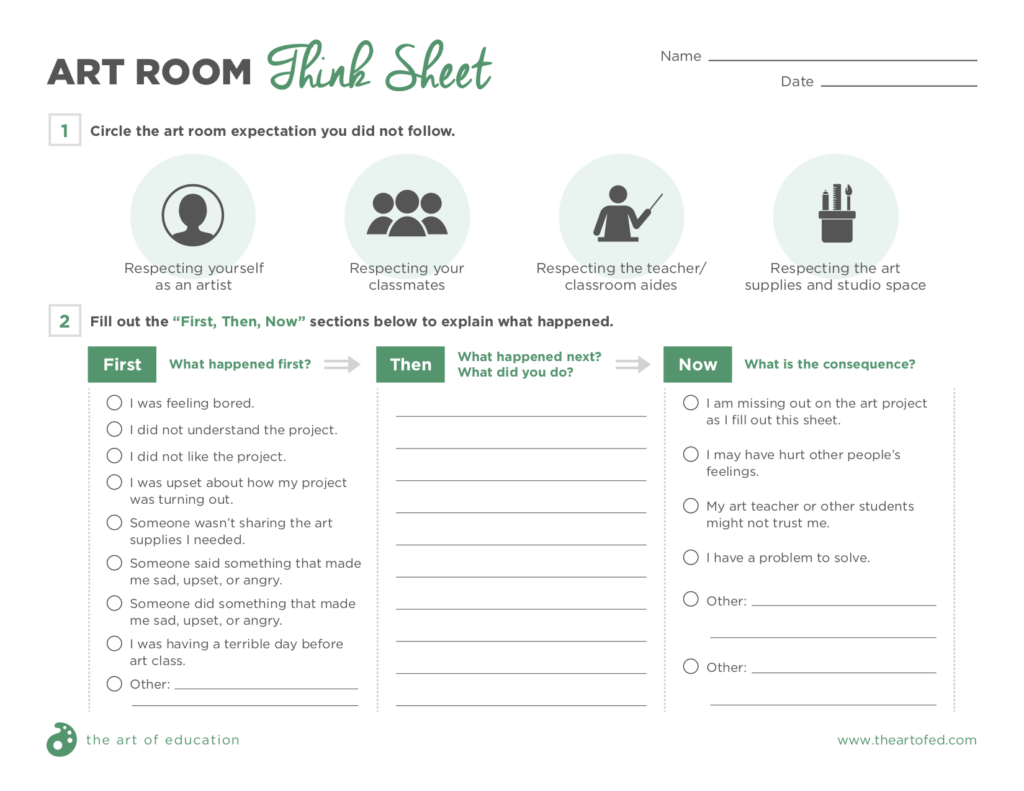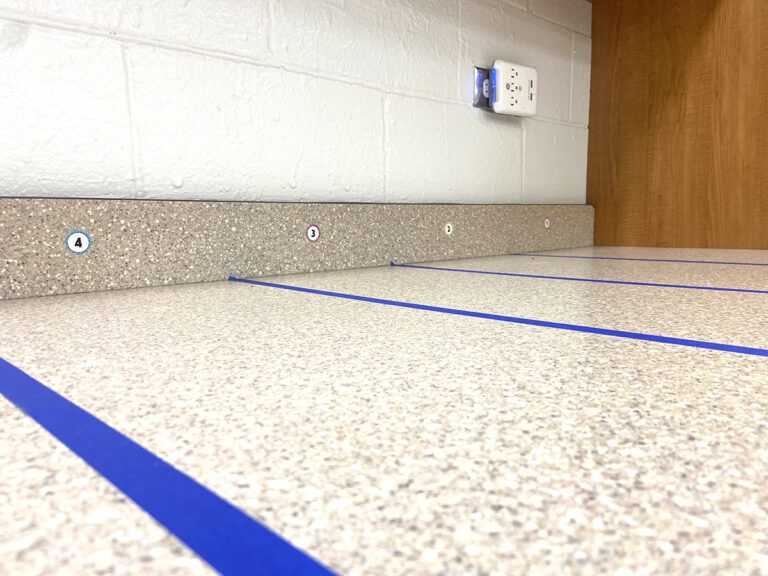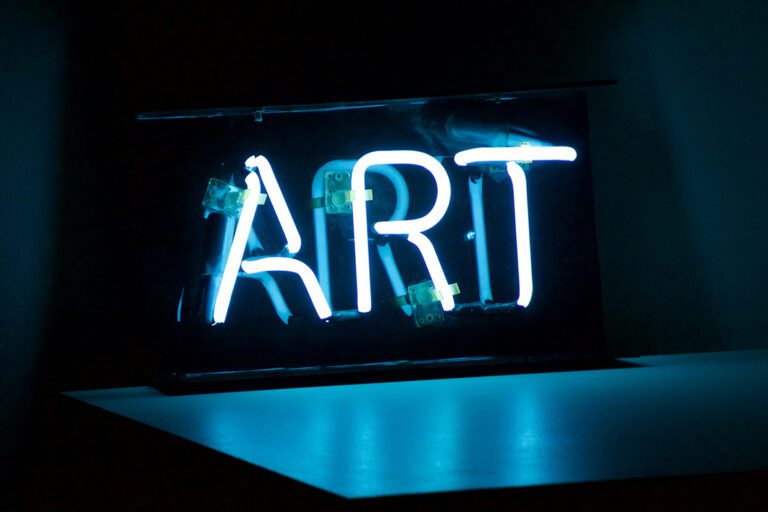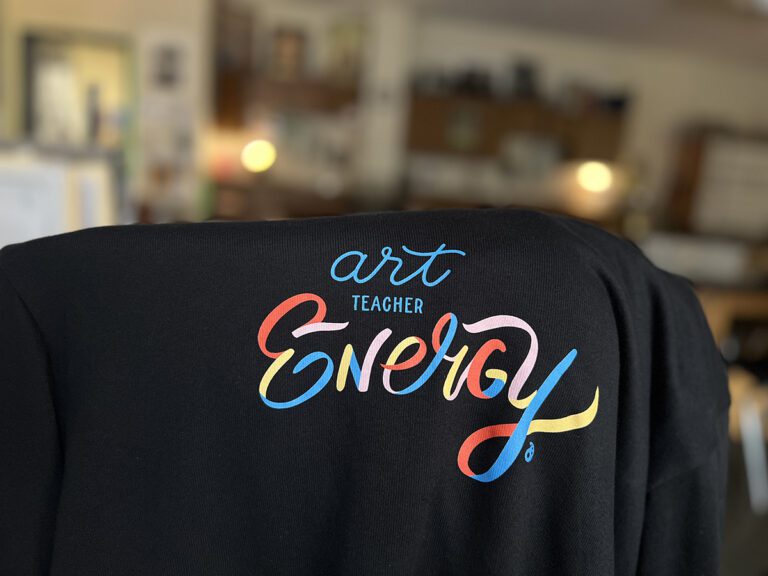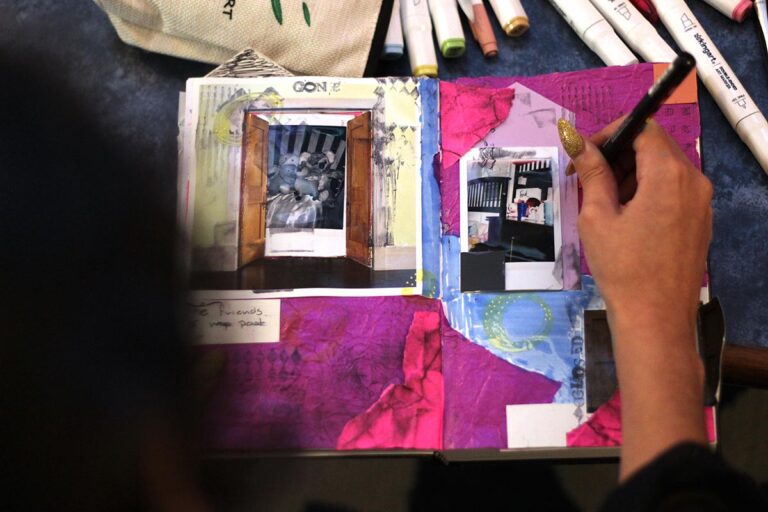In a perfect world, all of our art students would be so highly engaged in their artmaking classroom management concerns would be non-existent. But, as we know, this is not always the case.
Careful lesson planning, meaningful student-teacher relationships, and clear classroom expectations go a long way toward keeping the peace.
But what do you do AFTER a student’s choices have resulted in a challenging classroom management situation?
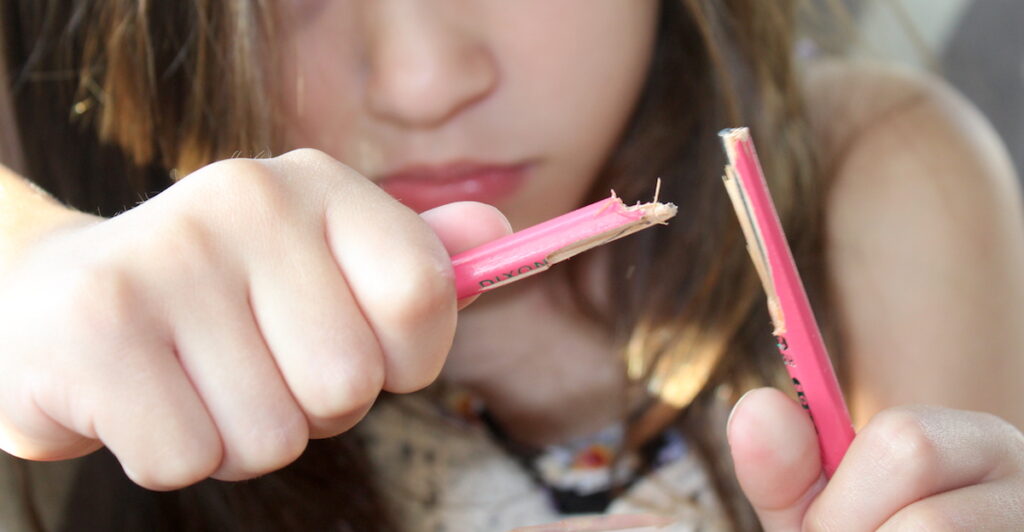
One useful tool in an art teacher’s kit of classroom management tricks is the “Think Sheet.”
The sheet is designed to help students be more mindful of their behavior and its consequences after a situation has occurred. Rather than lecture or berate a student, the art teacher gives them a few minutes to calm down, and asks them to complete the sheet. Ideally, the student and teacher fill this out collaboratively, signaling they are a team and planning for future behavioral success.
Think Sheets are used in a variety of classroom settings but would work most effectively when they are tailored to the art room. Let’s unpack the criteria for an art room specific Think Sheet.
Here are 6 Things Every Great Think Sheet Should Do
![]()
1. Identify the broken art room expectation.
To maximize the effectiveness of your classroom management plan, keep your expectations simple and clear.
In my room, my expectations have to do with respect.
- Respect yourself as an artist
- Respect your art classmates
- Respect your art teacher and classroom aides
- Respect your artwork and the art supplies
A student should be able to quickly answer which of your classroom expectations they failed to follow. If it is difficult to identify, this might be an indication your expectations are unclear, complicated or the student doesn’t have control of his/her behavior yet. In rare cases, this could be evidence of a behavioral disorder. If you suspect this, contact your school social worker for additional support.
2. Help unpack the antecedent event(s).
Most misbehaviors in the art room are motivated by an antecedent event (something that happened to drive the behavior). Some students are consciously aware of what the event was, while others are not yet metacognitive enough to understand. Providing a menu of antecedents helps your students start to see the reasons behind their choices.
3. Let the student explain his/her behavior in their own words.
Everyone likes to feel heard, and being able to explain exactly what happened in their own words can be a good first step to making things right.
A Think Sheet is a great classroom management tool. If you would like to dive deeper into classroom management, take a look at the AOEU course Managing the Art Room. Students make a comprehensive plan to implement immediately in their art rooms!
4. Help students recognize the effects of their actions.
After describing the event, give the student a menu of possible natural consequences for the behavior. This list is NOT a menu of the consequences “for getting caught” like detention, a phone call home, or a dean’s referral. Instead, it is a list of the natural social and academic consequences your student may not have considered.
5. Include a call to action.
Once a student has delved into their choices and the consequences of their actions, give them a chance to fix their mistakes. An excellent Think Sheet will help students identify to whom they may need to apologize and other actions they can take to make the situation right.
6. Include the teacher and other suggestions for next time.
In many cases, once a student and teacher understand the antecedent events, they can mitigate future classroom management issues with some smart solutions.
Here are some examples.
- Changing the seating chart
- Offering a drink break when a student gets frustrated
- Referring a bullying situation to a school counselor
- Modifying or scaffolding an assignment to ensure student success rather than off-task behavior
Provide room for your student to vocalize his or her needs. Don’t forget to provide examples of appropriate behavior alternatives for the next time.
Here is a sample to get you started!
Use the information above to craft a personalized Think Sheet, or, use our two-sided download below!
A Think Sheet allows time for both you and your student to calm down and decompress from a situation. When cooler heads prevail, you can collaboratively make a concrete plan to remedy the situation and avoid future problems. Another excellent advantage to the Think Sheet is that it creates a document trail. This can be useful for parents and administrators if you are seeing more significant behavior problems over time.
How do you use Think Sheets in your art classroom?
What other strategies do you use when a student doesn’t follow the classroom expectations?
Magazine articles and podcasts are opinions of professional education contributors and do not necessarily represent the position of the Art of Education University (AOEU) or its academic offerings. Contributors use terms in the way they are most often talked about in the scope of their educational experiences.
